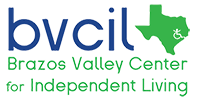Removing barriers, for people who have disabilities – and their families, and in communities – that’s what we do! CILs provide people with disabilities
a) the services they need,
b) when they need them, so that
c) they can obtain and sustain the lives they choose to lead.
a) Providing services they need:
- We’re are a part of – not apart from – the communities we serve. We build, sustain, and offer benefit of expertise, relationships, and support systems that people who come to us haven’t known of or been able to access. We stay locally current.
- Because CILs are designed and operated by people who have disabilities, we offer services based on:
- what people with disabilities who have faced barriers understand about what those barriers are and know how to overcome them.
- what people with disabilities who face those barriers today tell us they need.
- An array of services that build on strengths and needs our people and communities have.
- Consumers are involved in identifying their needs and developing strategies through planning for getting their needs met. The plans make the most of the expertise and relationships CILs have built while the consumer builds skills in planning and problem-solving.
b) When they need them:
- Many entities have waiting lists and / or delays in providing services. In many cases, eligibility determination takes valuable time. CILs offer services without delay. Typically, CILs begin providing services at the time of intake. Who else can make that claim?
c) Obtaining and sustaining the lives they choose to lead:
- We plan, carry out the plan, and followup with the consumer. We help ensure that the plan “sticks” and works well for the person.
- Case in point: Texas CILs have a lower level of recidivism for consumers relocated by a CIL (10%) vs when relocated by other entities (50%.) Is it because of our followup?
Thank you Amy Kantoff with the Texas Association of Centers for Independent Living for your eloquent answer!

